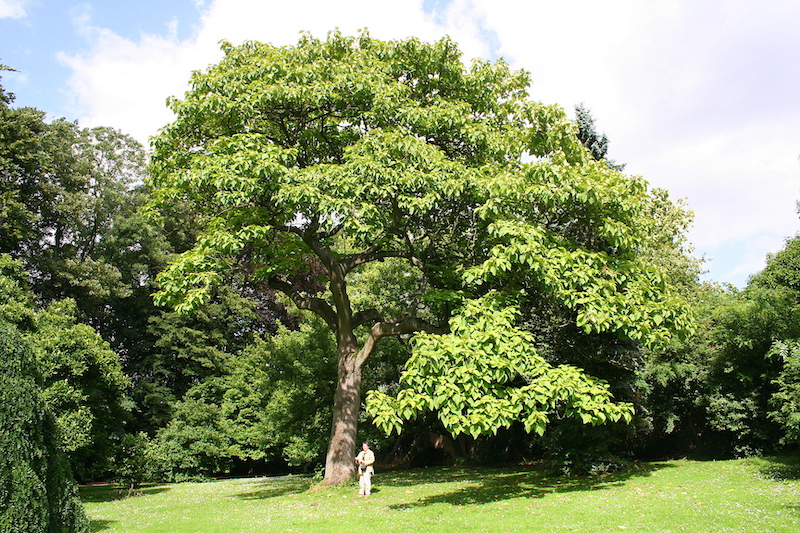Ask an Expert
Question from Jordan (received 2/01/21) -
Hello, My business partner and I are looking at testing the growth of a variety of Paulownia for the Costa Rican climate. We were wondering if there was a resource that you knew of that would allow us to test Costa Rican growing conditions in Utah. We are looking at doing some tests in Costa Rica as well. Any inputs on how to conduct viability tests would be greatly appreciated. Would greenhouse tests in Utah be something that is worthwhile? The variety is Paulownia Cotevisa 2. I look forward to hearing from you.
Answer from Dr. Mike Kuhns, USU Extension Forester and Professor (sent 2/02/21) -
Dear Jordan,

I have never done research on paulownia, nor has anyone else at USU. Almost all interest in the species in the U.S. is in the deep South as far north as Kentucky, I think mainly because it will survive there. I suggest that you do a web search on something like “paulownia cotevisa 2” and then look through the list for lIkely unbiased information sources. These include U.S. based Cooperative Extension faculty and offices (usually have website names that end in “ext” and “edu”) and government research and outreach agencies (their website names end in “gov”).
I did a couple of web searches myself, and from looking through the results I see many claims about this tree species being the fastest growing hardwood in the world and having other superlatives associated with it. These claims make me think of the old adage “too good to be true”. It’s not that you can’t grow this tree commercially, but be skeptical about the chance to make a lot of money growing them, and especially when someone tries to sell you something making those claims. For the cautious grower there is some good information out about growing the tree commercially. These include a guide to growing paulownia from University of Kentucky Extension Forestry, detailed write ups on the species’ ecology from the U.S. Forest Service, and a useful factsheet on growing it as an ornamental tree from Oregon State University. I knew that this genus is weedy and I saw quite a bit of discussion on that; Texas Invasives has more information to learn.
What I do know about the genus and species is that they are best grown in warm, wet locations where frost is rare or non-existant. Most people involved in promoting paulownia are in it to make money by selling seeds or seedlings. They definitely play up the good things about the fast growth and high wood value of the species, while wrongly claiming its ability to do well in moderately cold climates. I have lived in some fairly cold areas, like northern Utah, and I just don’t see this tree surviving the cold. In fact once I found one growing in Logan, Utah. It grew 4 to 5 feet in height in its first year and was dead by the following spring.
I don’t think that there is any way you could conduct useful tests in Utah on how paulownia (or any other tree species) would do in Costa Rica. There would be large differences in moisture availability, average temperature, and low temperatures (even the possibility of frost in most of Utah). In addition soils would be very different. You could grow them in pots in a heated greenhouse, but I doubt if you would learn anything that is not already known.
Every few years I have Utahns contact me who are interested in growing one of several species of fast growing trees as an investment. Usually they want to grow them somewhere in Utah, and that never makes sense. Costa Rica would be a good place to grow paulownia (i.e. the biology of the tree and the conditions they would face there would be right). However, the real question with making money in growing this or any tree species is having a market for the wood or other products. You will notice on many of the paulownia-focused websites that, even though the wood is supposedly incredibly valuable, almost no one has any to sell — what they sell are seeds and seedlings. This makes paulownia the ostrich of the tree world. There are websites all over the place touting the great tasting and high-priced meat of ostrich, but what are they selling? Chicks and eggs, not meat.
So though you will need to figure out how to grow these trees where you intend to grow them, that should be relatively straightforward. I suggest that you focus on finding out about markets for the wood wherever you intend to grow them. You also will find some market-related information in some of the documents I referred to above.

